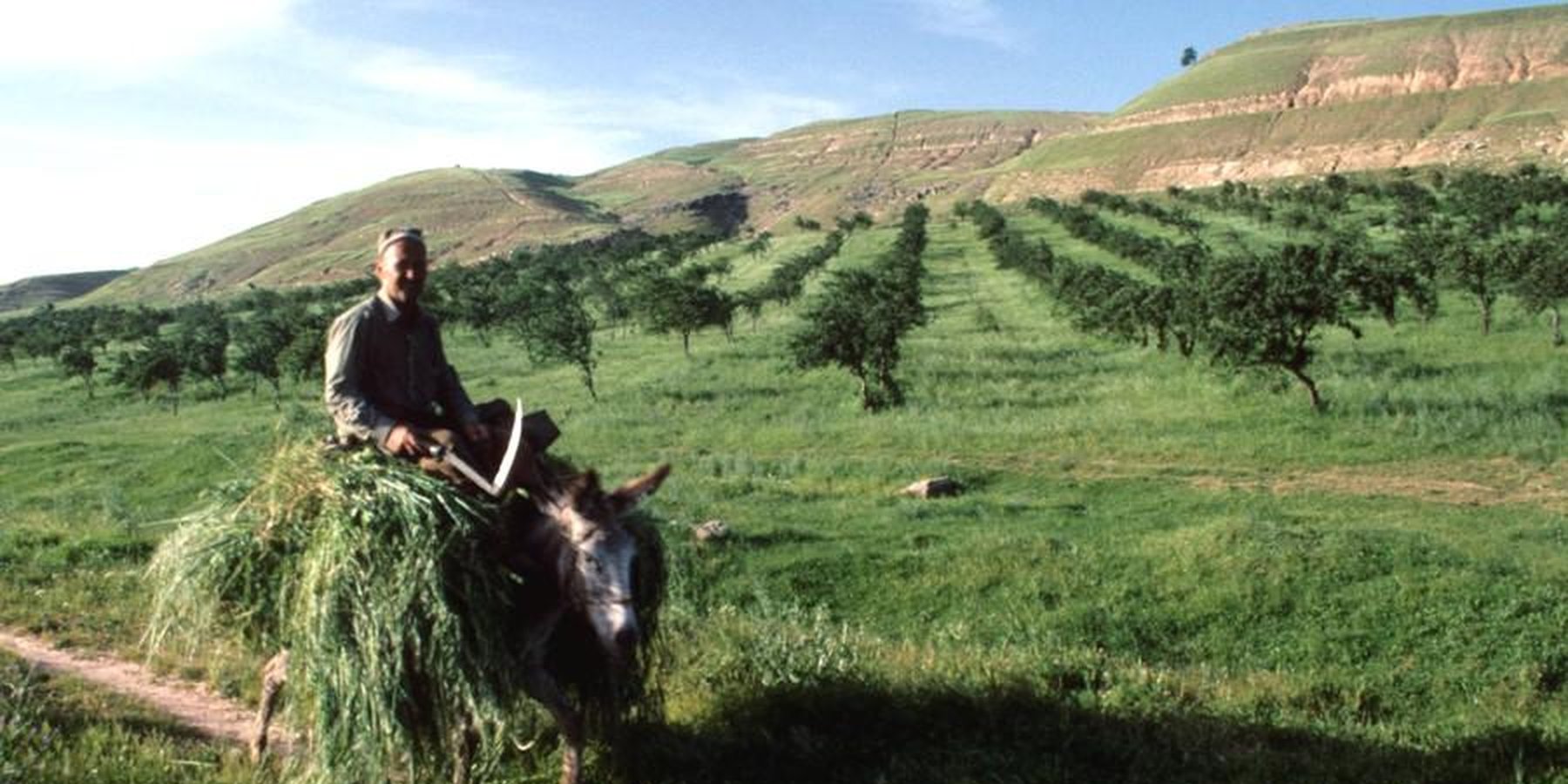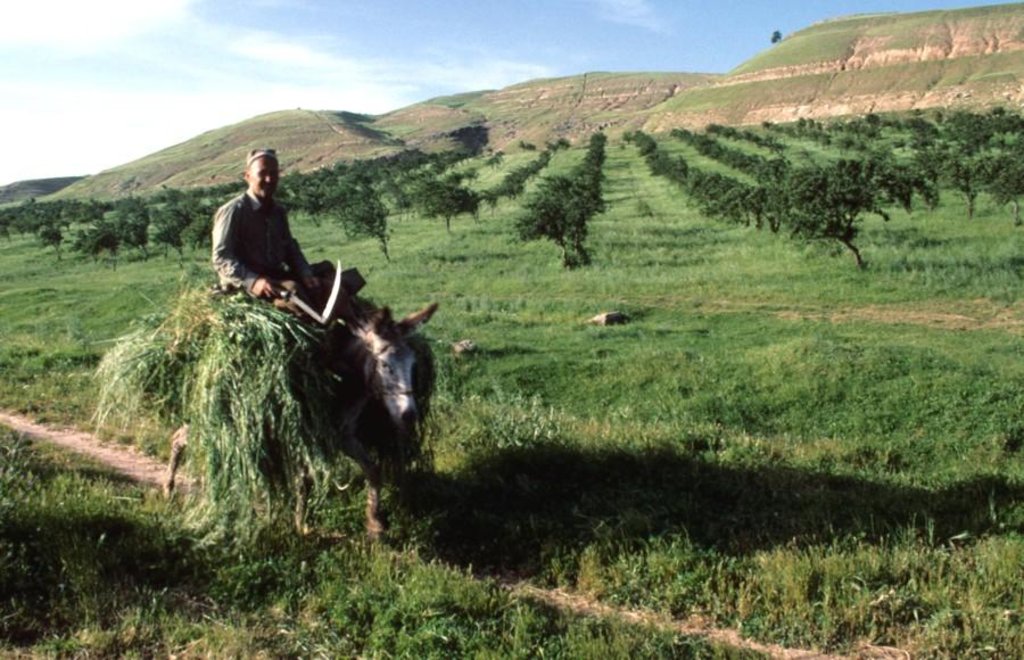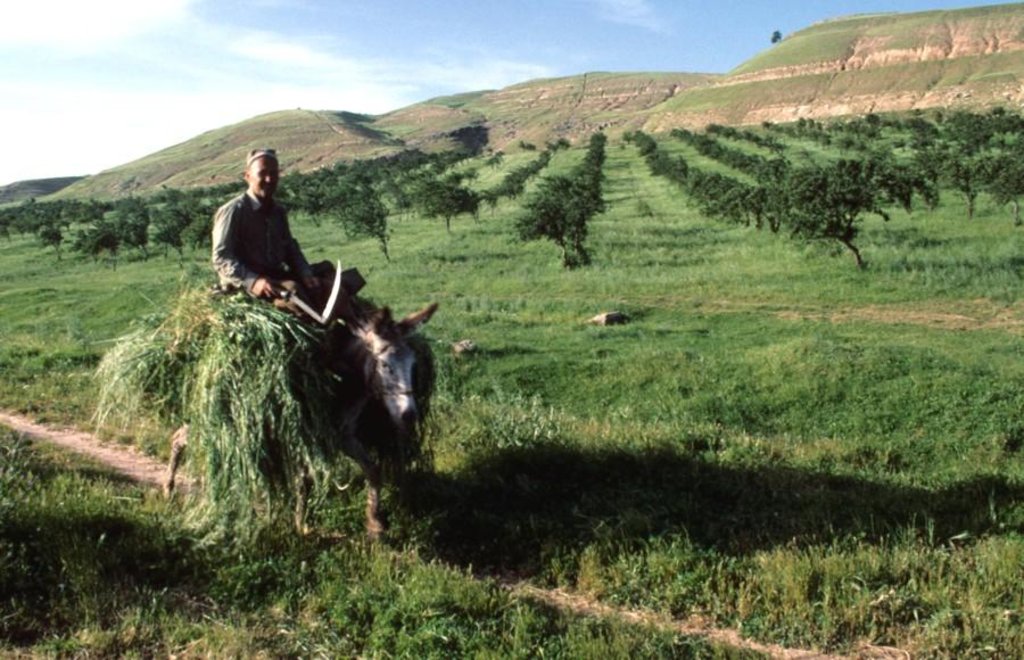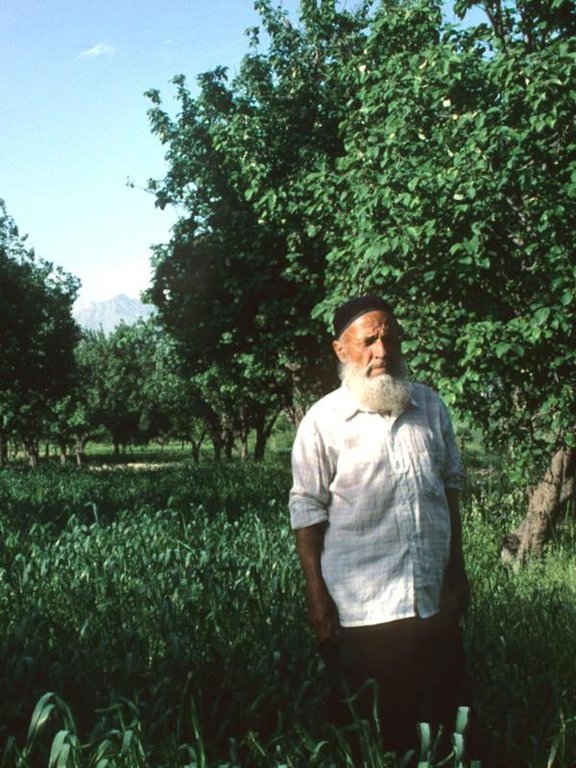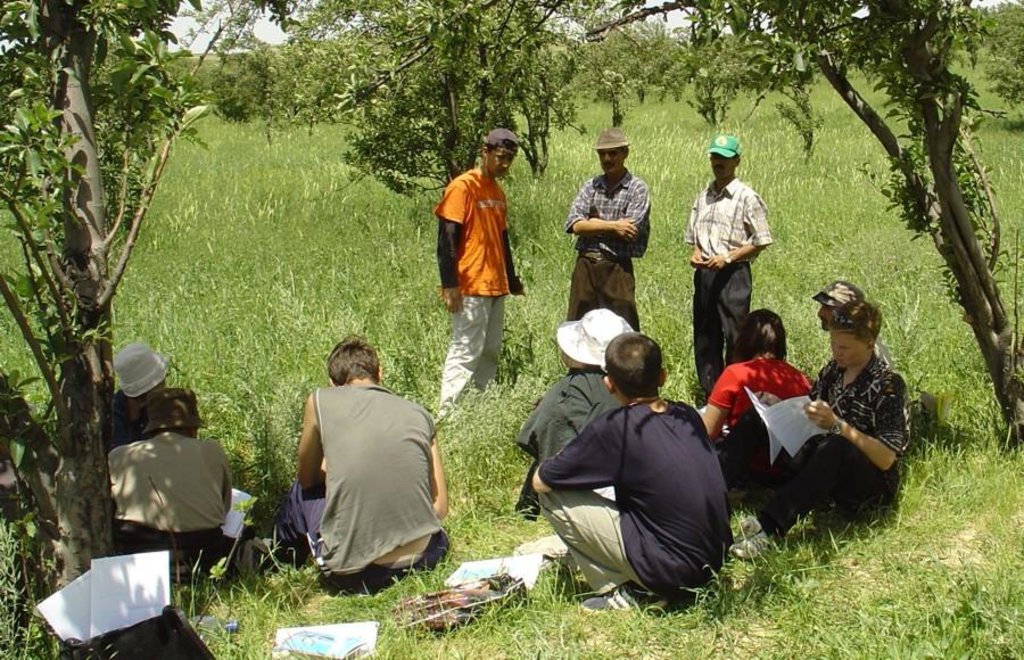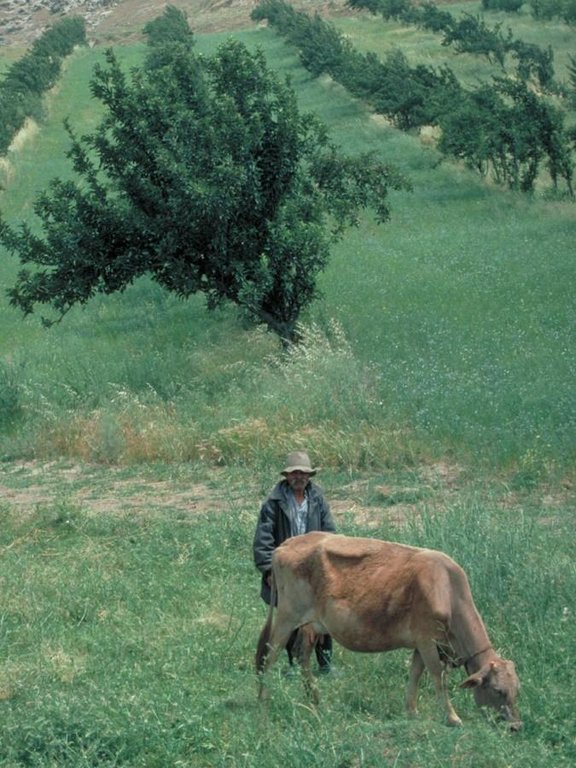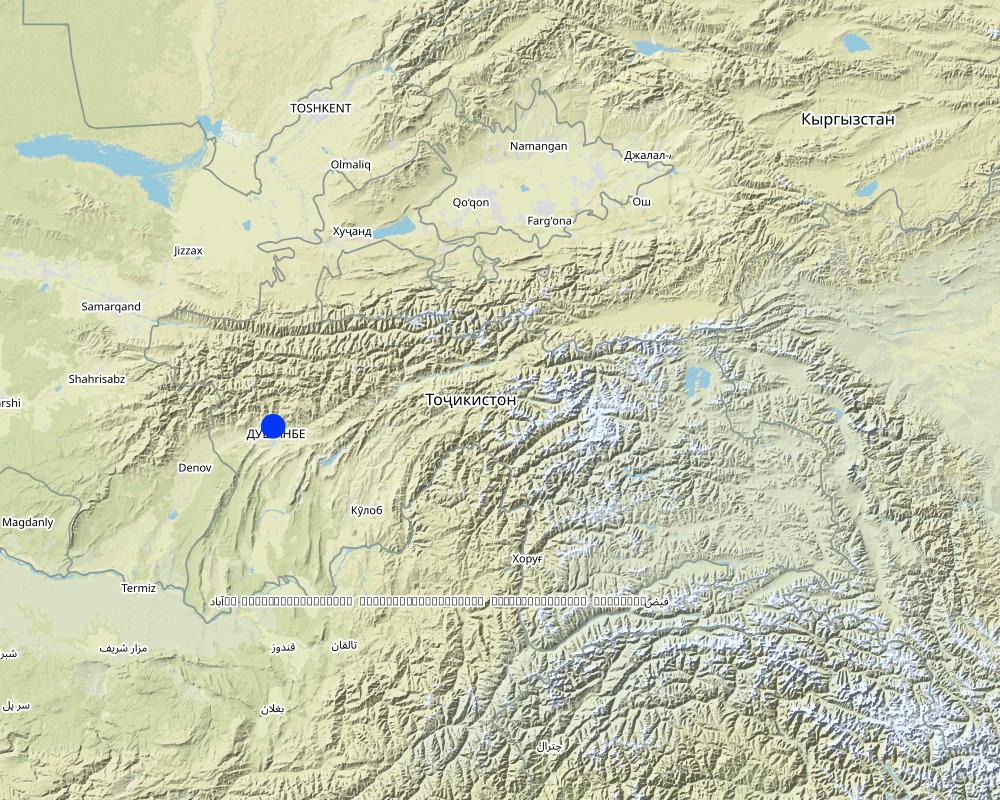Transition from a centralised regime to a local initiative [Тажикистан]
- Шинийг нээх:
- Шинэчлэх:
- Эмхэтгэгч: Sanginboy Sanginov
- Хянан тохиолдуулагч: –
- Хянагчид: Alexandra Gavilano, David Streiff, Deborah Niggli, Joana Eichenberger
approaches_2660 - Тажикистан
- Бүрэн хураангуйн PDF хувилбар
- Бүрэн хураангуйг PDF-ээр хэвлэх
- Хөтөч дэх бүрэн хураангуй
- Бүрэн хураангуй (форматгүй)
- Transition from a centralised regime to a local initiative: 05 7-р сар 2017 (inactive)
- Transition from a centralised regime to a local initiative: 07 8-р сар 2017 (inactive)
- Transition from a centralised regime to a local initiative: 04 4-р сар 2018 (inactive)
- Transition from a centralised regime to a local initiative: 02 11-р сар 2021 (public)
Бүлгүүдийг үзэх
Бүгдийг дэлгэх Бүгдийг хаах1. Ерөнхий мэдээлэл
1.2 Арга барилыг баримтжуулах болон үнэлгээ хийхэд оролцсон хүн эсвэл байгууллагын холбоо барих хаяг
Арга барилыг баримтжуулах/үнэлэх ажилд дэмжлэг үзүүлсэн төслийн нэр (шаардлагатай бол)
Book project: where the land is greener - Case Studies and Analysis of Soil and Water Conservation Initiatives Worldwide (where the land is greener)Арга барилыг баримтжуулах/үнэлэх ажилд дэмжлэг үзүүлсэн төслийн нэр (шаардлагатай бол)
Pilot Program for Climate Resilience, Tajikistan (WB / PPCR)Арга барилыг баримтжуулах/үнэлэх ажилд дэмжлэг үзүүлсэн байгууллага(ууд)-ын нэр (шаардлагатай бол)
Soil Science Institute (Soil Science Institute) - Тажикистан1.3 WOCAT-аар баримтжуулсан өгөгдлийг ашиглахтай холбоотой нөхцөл
Эмхэтгэгч болон гол мэдээлэгч хүн(хүмүүс) WOCAT аргачлалаар баримтжуулсан мэдээллийг ашиглахтай холбоотой нөхцлийг хүлээн зөвшөөрсөн:
Тийм
1.4 ГТМ-ийн технологийн асуулгын(д) суурь мэдээлэл(д)
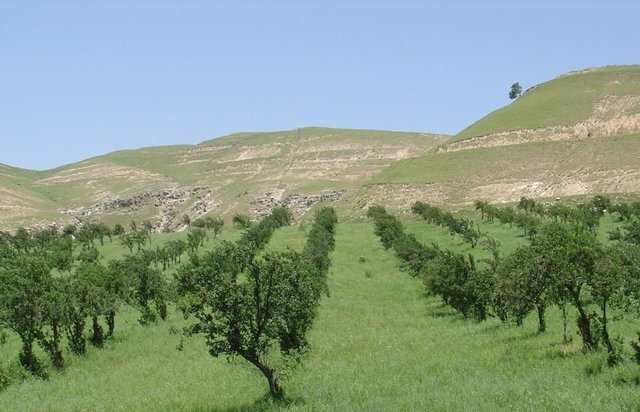
Orchard-based agroforestry [Тажикистан]
An agroforestry system where legumes and cereals are planted in fruit orchards, giving simultaneous production and conservation benefits.
- Эмхэтгэгч: Loes Masselink
2. ГТМ Арга барилын тодорхойлолт
2.1 Арга барилын товч тодорхойлолт
A land use system established during the previous authoritarian regime of the Soviet Union is now being adapted to the farmers' needs via their own initiative.
2.2 Арга барилын дэлгэрэнгүй тодорхойлолт
Арга барилын дэлгэрэнгүй тодорхойлолт:
Aims / objectives: This case study compares two approaches which both contributed to the development of the current orchard-based agroforestry system: (1) Soviet approach: the previous state-run dictatorial system of the soviet times and (2) Farmers initiative: the current bottom-up approach. Farmers from the hilly Faizabad region with its deep and highly erodible loess soils had traditionally combined the cultivation of beans and wheat with fruit trees. During the 1980s the Soviet administration decided to intensify apple production in this area and to establish orchards on a large scale, making use of the well suited environmental conditions. The system introduced, comprised of densely planted purestand orchards, mechanically constructed terraces (where the slopes required this), and an irrigation system. Establishment was conducted through a top-down/authoritarian approach, and all inputs for implementation and maintenance were provided by the state. Farmers worked as employees on the state farms and received cash wages.
Methods: After the collapse of the Soviet Union and the start of the civil war, Tajikistan suffered from acute food shortages. In 1993, the Tajik government lifted the prohibition on planting wheat in rainfed areas. Farmers renting the land of the former state farms began to revert to intercropping annual crops, mainly wheat and beans, between thinned rows of apple trees. This was for both household use and for sale at the market. The initiative came from the farmers, and reflected the traditional system of production. However the pumping station and irrigation system have not been working for the last 10 years and therefore supplementary irrigation has not been available. In contrast to former times, decision-making, management activities, and provision of inputs/finance are all carried out by the land users themselves. In some cases, marginal farmers received incentive support from NGOs or from the World Food Programme. Systematic assistance from extension services, financial support to purchase pesticides or fertilisers, and investment to restore the irrigation system would all help to improve the agroforestry system and thus increase yields.
2.3 Арга барилын зурагууд
2.5 Арга барил нэвтрүүлсэн улс орон / бүс нутаг / байршил
Улс:
Тажикистан
Улс/аймаг/сум:
Faizabad
Map
×2.6 Арга барилыг эхлэх, дуусах огноо
Эхлэх жилийг тэмдэглэ:
1993
2.7 Арга барилын төрөл
- уламжлалт / уугуул
2.8 Арга барилын үндсэн зорилго, зорилтууд
The previous Soviet approach aimed to increase apple production in a region with ideal environmental conditions. The current approach used by farmers aims to make more intensive use of agricultural lands through an agroforestry system, and especially to provide food security by growing annual crops between the trees.
The SLM Approach addressed the following problems: - Soviet times: the original problems addressed by the authorities during the soviet era were how to increase agricultural production, without consideration of the needs of the local rural population. - Post-soviet period: in 1993, when the soviet era ended, and the prohibition on cultivation of wheat was lifted, the underlying problem was a shortage of food, especially of wheat.
2.9 Арга барилын хүрээнд хэрэгжсэн Технологи/Технологиудад дэмжсэн эсвэл саад учруулсан нөхцлүүд
санхүүгийн нөөц, үйлчилгээний хүртээмж / боломж
- Хазаарлалт
1) Soviet Approach: The establishment and maintenance of the irrigation system, terraces and the orchards themselves required high financial input.
2)Farmers' initiative: Lack of funds for fertilizers, manure (which is burned as fuel for heating) and pesticides.
Treatment through the SLM Approach: 1) Equipment, seedlings and salaries were all provided by the central Soviet state.
2) Improved fertility management: farmers developed cost-effective practices such as crop rotation and fallow periods etc.
Хууль, эрхзүйн хүрээ (газар эзэмшил, газар, ус ашиглах эрх)
- Хазаарлалт
The existing land ownership, land use rights / water rights hindered a little the approach implementation Allowing cropping on the farms was the first step; then land use rights were moved from state to individual farmers. While those orchards, which are still managed as state farms, are often not well looked after, renting of land and issuing of landholder certificates, generally leads to improved orchard management. However, access to land belonging to state farms (through rental agreements) is limited.
3. Оролцогч талуудын оролцоо ба үүргүүд
3.1 Арга барилд оролцогч талууд болон тэдгээрийн үүргүүд
- Орон нутгийн газар ашиглагч / орон нутгийн иргэд
- Багш/ сурагч/ оюутан
- Засгийн газар (шийдвэр гаргагч, төлөвлөгч)
3.2 Арга барилын янз бүрийн үе шатанд орон нутгийн газар ашиглагчид / бүлэглэлүүдийг татан оролцуулах
| Орон нутгийн газар ашиглагч / орон нутгийн иргэдийн оролцоо | Хэн оролцсоныг тодорхойлж, үйл ажиллагааг тайлбарлана уу | |
|---|---|---|
| санаачлага/идэвхжүүлэлт | үгүй | Involvement during the current approach: self-mobilisation, farmers' initiative to increase crop production by intercropping in orchards |
| Төлөвлөгөө | үгүй | Involvement during the Soviet approach: none Involvement during the current approach: farmer's are fully involved using their own initiatives. |
| Хэрэгжилт | үгүй | Involvement during the Soviet approach: payment for casual labour. Involvement during current farmers' initiative: interactive/self-mobilisation, responsibility for all steps, technical assistance from extensionists. |
| Мониторинг/ үнэлгээ | үгүй | Involvement during the Soviet approach was interactive, via observations, public meetings, workshops, etc. Involvement during current farmer's initiative: includes self-mobilisation, interactive, responsibility for all the steps, technical assistance from external sources. |
| Research | үгүй | Involvement during the Soviet approach was passive: technology development in the Faizabad Horticulture Institute. Involvement during current farmers' initiative: none. |
3.4 ГТМ-ийн технологи/технологиуд сонгох шийдвэр
Хэрэгжүүлэх Технологи/Технологиудын сонголтыг хийж шийдвэр гаргасан хүнийг тодорхойлно уу:
- ГТМ-ийн мэргэжилтнүүдийн дэмжлэгтэйгээр, голчлон газар ашиглагчид
Тайлбар:
Soviet approach: decisions made by the state and local authorities. Current farmer's initiative: decisions made mainly by land users themselves supported by specialists.
Decisions on the method of implementing the SLM Technology were made by mainly by land users supported by SLM specialists. Soviet approach: decisions made by technical specialists. Current farmer's initiative: decisions made mainly by land users supported by agricultural extension service (technical assistance).
4. Техникийн дэмжлэг, чадавхи бүрдүүлэх, мэдлэгийн менежмент
4.1 Чадавхи бэхжүүлэх/сургалт
Газар эзэмшигчид / бусад оролцогч талуудад сургалт явуулсан уу?
Тийм
Хамрагдсан сэвдүүд:
Training was provided on-the-job, by public meetings and through courses. Training focused on improving irrigation, tree planting practices and tree management. Training conducted during the establishment of the orchards was useful and adequate. No training was given (naturally) in intercropping of wheat and other cereals between the rows of apple trees the farmers??? initiative. However in order
4.2 Зөвлөх үйлчилгээ
Газар ашиглагчдад зөвлөх үйлчилгээ авах боломжтой байдаг уу?
Тийм
Тодорхойлолт / тайлбар:
Key elements: For running the orchards during Soviet times a top-down/authoritarian approach was used
4.3 Институцийг бэхжүүлэх (байгууллагын хөгжил)
Арга барилаар дамжуулан институц байгуулагдаж эсвэл бэхжсэн үү?
- Үгүй
4.4 Мониторинг ба үнэлгээ
Мониторинг болон үнэлгээ нь арга барилын хэсэг үү?
Тийм
Тайлбар:
bio-physical aspects were ad hoc monitored by 0 through observations; indicators: erosion and crop growth - sedimentation and plant development
economic / production aspects were regular monitored by 0 through measurements; indicators: farmers' yield and profit
area treated aspects were ad hoc monitored by 0 through measurements; indicators: None
no. of land users involved aspects were ad hoc monitored by 0 through observations; indicators: None
There were no changes in the Approach as a result of monitoring and evaluation: None under either.
4.5 Судалгаа
Судалгаа арга барилын хэсэг нь байсан уу?
Тийм
Дэлгэрэнгүй мэдээллийг өгч, хэн судалгаа явуулсныг бичнэ үү:
During the original establishment of the orchards, research was conducted. For the new system of intercropping with wheat, research contributed by providing support with respect to choice of varieties.
5. Санхүүгийн болон гадаад материаллаг дэмжлэг
5.1 ГТМ-ийн Арга барилын бүрэлдэхүүн хэсгийн жилийн төсөв
Тайлбар (жнь: санхүүжилтийн гол эх үүсвэр / гол хандивлагчид):
Approach costs were met by the following donors: local community / land user(s) (by the farmer's initiative): 100.0%
5.2 Газар ашиглагчдад санхүүгийн / материаллаг дэмжлэг үзүүлсэн
Технологи / технологийг хэрэгжүүлэхэд газар ашиглагчид санхүүгийн / материаллаг дэмжлэг авсан уу?
Үгүй
5.4 Кредит
Арга барилын хүрээнд ГТМ-ийн үйл ажиллагаанд зориулж зээлд хамрагдсан уу?
Тийм
Нөхцөл байдлын тодорхойлолт (хүүгийн хэмжээ, эргэн төлөлт гэх мэт):
Repayment conditions: For the original establishment of the orchards loans were provided by the state at a very low interest rate. Currently, for cultivating cereals and legumes, farmers have access to loans, but the interest rate is very high..
6. Нөлөөллийн дүн шинжилгээ ба дүгнэлт
6.1 Арга барилын нөлөөллүүд
Currently: moderately positive impact on soil and water conservation through the agroforestry system.
Did other land users / projects adopt the Approach?
- Үгүй
- Тийм, бага зэрэг
- Тийм, зарим
- Тийм, их
None known.
6.2 ГТМ-ийг хэрэгжүүлэх газар ашиглагчидын гол санаачилга
- үйлдвэрлэл нэмэгдсэн
This case illustrates the challenges in the transition from state-run large-scale farming to individual management of smaller units. In this case, soviet Tajikistan had established pure-stand orchards. However, in response to acute food shortage during the civil war, farmers started to intercrop wheat and beans in their orchards: a better all-round production/conservation system.
6.3 Арга барилын үйл ажиллагааны тогтвортой байдал
Газар ашиглагчид арга барилаар дамжуулан хэрэгжүүлсэн арга хэмжээг тогтвортой хадгалж чадах уу (гадны дэмжлэггүйгээр)?
- Үгүй
Хэрэв үгүй эсвэл тодорхойгүй бол дэлгэрэнгүй тайлбар өгнө үү:
The Soviet approach of orchards managed through state farms effectively died out with the collapse of the Soviet Union: the irrigation system ceased to function and inputs were not provided anymore by the state. Furthermore, the land use system was not adequate.
6.4 Арга барилын тогтвортой/давуу тал/боломжууд
| Эмхэтгэгч, бусад мэдээлэл өгсөн хүмүүсийн өнцгөөс тодорхойлсон давуу тал/боломжууд |
|---|
| Farmer's initiative: Farmers get diversified and additional products (grain, apples, beans, hay, etc). (How to sustain/ enhance this strength: The government should support the farmer's initiatives. The marketing system for selling fruits should be better developed.) |
| Farmer's initiative: Farmers themselves are finding a way out of the poverty trap. (How to sustain/ enhance this strength: Land reform should be improved and every farmer should be eligible for land certificates/titles.) |
| Soviet approach: Well managed and controlled land use system with efficient irrigation system, high production, ensured maintenance, provision of fertilisers and technical assistance. |
6.5 Арга барилын дутагдалтай/сул тал/аюул болон тэдгээрийн хэрхэн даван туулах арга замууд
| Эмхэтгэгч, бусад мэдээлэл өгсөн хүмүүсийн өнцгөөс тодорхойлсон сул тал/ дутагдал/ эрсдэл | Тэдгээрийг хэрхэн даван туулах вэ? |
|---|---|
| Farmer's initiative: Further extension of the agroforestry system is limited without support from the extension service | The extension service should provide more inputs. |
| Farmer's initiative: Land use rights: as long as the land still belongs to the state, people have very little motivation to improve it | Privatise the land. |
| Soviet approach: No diversity, mono-cropping system aimed at maximised production; as soon as state support ceased, the system collapsed. |
Холбоос ба модулууд
Бүгдийг дэлгэх Бүгдийг хаахХолбоосууд

Orchard-based agroforestry [Тажикистан]
An agroforestry system where legumes and cereals are planted in fruit orchards, giving simultaneous production and conservation benefits.
- Эмхэтгэгч: Loes Masselink
Модулууд
Модуль байхгүй байна


